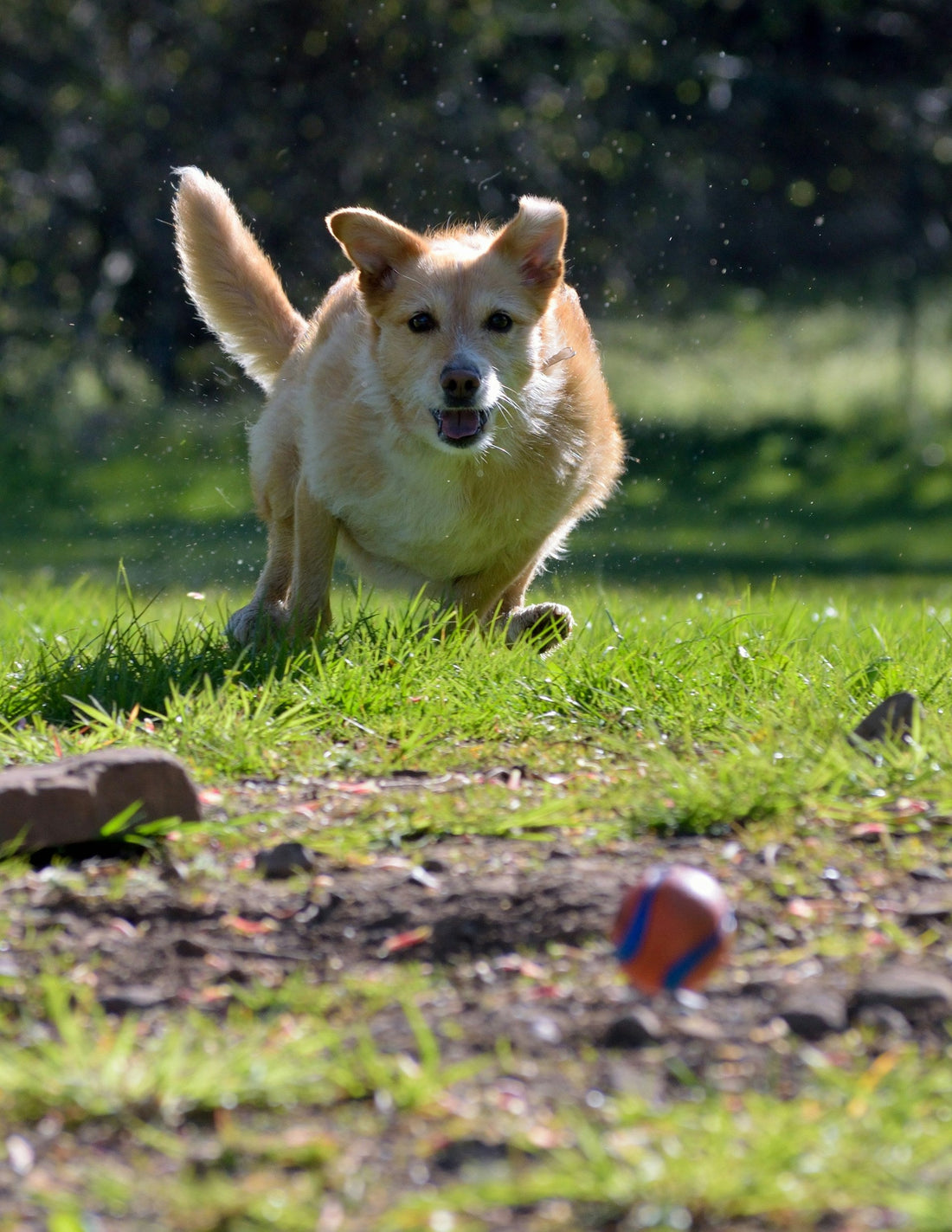
Breaking the Dopamine Loop
Share
Have you ever met a dog that just can’t settle? The one who’s always pacing, whining, or waiting for the next big thing to happen? Maybe your own dog is like that - constantly seeking stimulation, always needing something to do and struggling to relax even when nothing is going on. If that sounds familiar, they might be stuck in a dopamine loop.
What’s a Dopamine Loop?
Dopamine is often called the “feel-good” neurotransmitter, but it’s actually more about anticipation and seeking rewards than the feeling of satisfaction itself. It drives behaviour, pushing your dog to chase, hunt, explore, and engage in activities that bring a sense of excitement.
A dopamine loop happens when a dog becomes addicted to the cycle of seeking and expecting rewards. Instead of experiencing fulfillment after an activity, they immediately crave the next hit of excitement. This is common in dogs that get a lot of high-energy stimulation but not enough true decompression and rest.
Signs Your Dog Might Be Stuck in a Dopamine Loop
-
Constantly demanding play or attention – Even after a walk or training session, they still seem wired.
-
Struggles to relax – They can’t just “chill” in the house and always need something to do.
-
Fixation on toys, balls, or movement – They can’t disengage from certain activities and become obsessive.
-
Easily frustrated or reactive – If their expectations aren’t met, they get restless or vocal.
-
Poor impulse control – They struggle to settle even in calm environments.
How Does This Happen?
Certain types of activities reinforce the dopamine cycle more than others. These include:
-
Ball throwing & repetitive fetch – Each throw creates an anticipation-reward cycle, keeping dopamine high.
-
High-arousal play – Rough play or fast-paced activities without balance can fuel overexcitement.
-
Constant novelty – If a dog is always doing something new, they never learn to be content with stillness.
-
Over-reliance on food rewards – If every behavior is reinforced with food, some dogs get stuck in a reward-seeking mindset.
Breaking the Cycle & Teaching Real Fulfillment
If your dog is stuck in a dopamine loop, the goal is to introduce activities that provide fulfillment and balance, rather than just more stimulation. Here’s how:
1. Structured vs. Free-Time Activities
Not all activities need to be fast-paced or reward-driven. Balance high-energy fun with calm engagement.
-
Sniff walks – Let them explore at their own pace without rushing to the next thing.
-
Decompression time – Provide quiet, independent time in a low-stimulation environment.
-
Long-lasting chews or licking activities – These naturally trigger calming responses.
2. Encourage Rest & Relaxation
-
Teach a settle cue where they learn to relax on their own.
-
Provide cozy spots that promote calm behaviour (not just an “off-switch” after intense activity).
-
Avoid immediately rewarding hyperactive behaviour - encourage calm engagement instead.
3. Rethink Reward-Based Training
-
Use calming rewards like gentle praise or petting instead of just high-energy reinforcement.
-
Train with a mix of food, environmental rewards, and functional skills that build patience.
-
Teach delayed gratification by working on impulse control exercises.
The Goal: A Balanced, Fulfilled Dog
It’s not about removing fun or stimulation, it’s about making sure your dog experiences real satisfaction, not just a constant craving for the next big thing. A dog who can switch between activity and rest is a dog who truly thrives.
So, if your pup has been caught in a dopamine loop, it’s time to shift focus. Give them outlets for mental engagement, but also teach them the value of calmness, patience, and contentment. Because a happy dog isn’t just one who’s always doing - it’s one who knows how to just be.